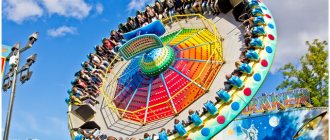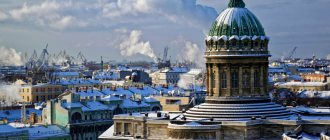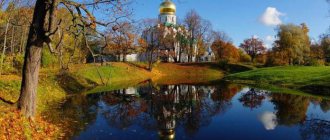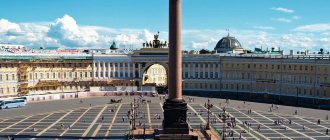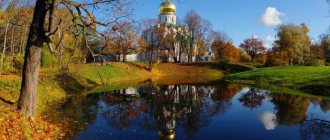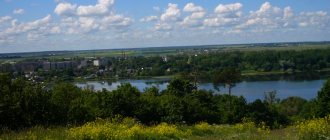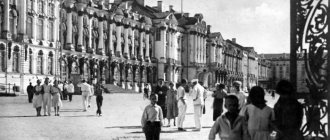The former capital of the former Russian Empire is surrounded by several, again former, royal residences. The most famous of them is Peterhof. The second most popular among tourists is the Tsarskoye Selo Museum-Reserve in St. Petersburg, and more specifically in the city of Pushkin.
The attraction includes: the Great Catherine Palace with the Amber Room, Catherine Park, Alexander Palace and its garden. Here, in Pushkin, is the Tsarskoye Selo Lyceum, where Alexander Sergeevich studied. In honor of the most famous Russian poet, the settlement was renamed during the Soviet years from Tsarskoye Selo to Pushkin.
I’ve been to the city several times: both as a tourist, on a tour, and as a local, walking around Alexander Park with friends. The place is good in any role. The only point is that, like any summer residence, Tsarskoe Selo is more pleasant to visit in the summer. Although the winter season also has its advantages.
I’ll tell you: when, how, and how much it costs to visit the city of Pushkin near St. Petersburg.
Catherine Palace and Park
A great place for both walking and studying history and architecture. Such famous architects as Rastrelli, Cameron, Quarenghi, Stasov and others worked here. All tsars, starting with Peter I, left their imprint here.
The role of the compositional core of the entire ensemble is played by the Catherine Palace - a grandiose building in the Russian Baroque style. The Great Hall of the palace and the “golden suite” of state halls, including the world-famous revived Amber Room, amaze with the luxurious decoration. Once here, you will feel the spirit of the Elizabethan and Catherine eras, partly of the era of Emperor Alexander I, and you will see rare objects of applied art.
Working hours: 10:00 — 18:00
Recommended duration of visit: More than 3 hours
Address: Sadovaya st., 7, Pushkin, St. Petersburg
Telephone:
A little history
First of all, it is worth introducing the reader to the history of the city. Initially, the territory where Pushkin is now located belonged to Sweden, and there was an estate of a Swedish magnate called “Sarskaya Manor” on it. After the Northern War, which lasted from 1700 to 1721, it became part of the Russian Empire.
Catherine
Several years after the end of the war, Peter the Great handed over the muse to his beloved Martha Skavronskaya, and it was this event that marked the transformation of the old estate, located in a marshy area, into a luxurious royal residence.
Marta Skavronskaya immediately set about arranging the new property. Construction proceeded quickly, and already in 1725 the residence was renamed Tsarskoe Selo, and the first palace, quarters for servants, etc. were built. After the death of Peter, his beloved ascended the throne under the name of Ekaterina Alekseevna, and a period of prosperity began for Tsarskoe Selo.
Technical innovations began to appear in the town, palaces and parks were rebuilt, and the best gardeners and architects were invited.
It was at this time that the so-called Russian Baroque became especially widespread, in no way inferior in splendor to its European counterpart.
During this period, numerous buildings in different styles appeared in Tsarskoe Selo, the famous Rastrelli built a pavilion called the Hermitage, and the city itself flourished.
After Catherine's death, Tsarskoe Selo was quiet for a long time. Pavel came to power, skeptical of Catherine’s whims, which is why all the construction projects unfinished during her lifetime stopped.
Catherine II
Under Catherine II, buildings in the style of classicism began to appear in Tsarskoye Selo, the city became more aristocratic and quieter.
The nineteenth century became a time of blissful calm for the city: the era of magnificent balls and pretentious luxury was over, but for the royal family the residence remained a favorite place for relaxation and entertainment.
The Tsarskoye Selo Lyceum was built, which was planned as an educational institution for future government workers, but this plan failed miserably - everyone leaving the walls of the Lyceum turned out to be rebels.
XX century
The twentieth century became a difficult time for Tsarskoye Selo. It was here that Nicholas II abdicated the throne and was imprisoned. Also in Pushkin, the first murder of a clergyman took place, which began a series of reprisals against church workers.
During World War II, many luxurious pavilions were destroyed as the city was under occupation. In particular, the famous Amber Room of the Catherine Palace lost its walls made of pure amber. But the city managed to recover from the shock and adopted a new name “Pushkin”, which remains with it to this day. Restoration of many buildings destroyed in the twentieth century is still underway.
State Museum-Reserve Tsarskoe Selo
All tsars, from Catherine I to Nicholas II, left their mark here. Led by the Baroque-style Catherine Palace, this place is filled with many famous monuments of world architecture. The legendary Amber Room is also located here. Separately, it is worth noting the Alexander Palace, where you can get acquainted with the life of the last Romanovs - Nicholas II and Alexandra Fedorovna.
On the territory of the Catherine and Alexander parks, with a total area of 300 hectares, there are more than 100 architectural structures: from majestic palaces and monumental monuments to pavilions, bridges, marble monuments, exotic structures made in the style of Gothic, Turkish, and Chinese architecture.
Recommended visit duration: 1–2 hours
Location : st. Sadovaya, 7, Pushkin, St. Petersburg
Telephone:
Memorial Museum-Lyceum, Branch of the All-Russian Museum of A.S. Pushkin
The lyceum is interesting not only for children, but also for adults. It’s better to take a tour and listen to the guide, after which, slowly, walk through the halls again. The museum is small and will take no more than an hour. Entrance fee: adults 120 rubles, pensioners 50 rubles, children under 16 years old free. You can take a single ticket for two museums: the Lyceum and A.S. Dacha. Pushkin. Cost 400 rubles.
Location: Sadovaya street, 2, Pushkin, St. Petersburg
Telephone:
How to get to the city of Pushkin
There are several types of transport from St. Petersburg to the city. Distance – 25 km in a straight line. Travel time depends on where you start your journey: from the center it will be longer, and from the outskirts it will be twice as fast. So, by train from Vitebsky station you will get there in 30 minutes. The interval of routes is every 10-20 minutes. By train from the Kupchino railway station the trip will take only 15 minutes.
The second way to get there is by buses and minibuses. From the Moskovskaya metro station on routes No. 187, K-545, K-287, K-347a and K-342. From “Kupchino” No. K-545a, K-286, K-342 and K-347. From "Zvezdnaya" No. 186, 179 and K-363.
To travel by car, set the GPS coordinates of your destination - 59.717612, 30.406233, and move along Vitebsky Prospect, and then Petersburg Highway. Any city taxi can also take you there.
Alexandrovsky Park
A park of extraordinary beauty and sophistication is located in the city of Pushkin. This is a wonderful place for exploring on foot, on bicycles or on roller skates. Well-groomed paths, beautiful alleys, ponds where you can feed the ducks by hand.
You can walk alone, with a group or with a loved one. Here you can spend 3-4 hours unnoticed and enjoy the atmosphere in which the emperors rested. Particularly interesting in the autumn and summer seasons.
Recommended visit duration: < 1 hour
Location: st. Dvortsovaya, 2 | Tsarskoe Selo, Pushkin, St. Petersburg
Telephone:
Suburb history
The history of Pushkin began in the 17th century. Initially, the lands where the suburb is now located were owned by the Swedes. At that time, on the site of today’s Catherine Park, an estate was built, which was called Sarskaya Manor. It is believed that the familiar name of Tsarskoye Selo comes from the word “Sarskaya”, as indicated by the similarity in sound. The new name became firmly established in everyday life, giving the suburb an appropriate status.
First, the Manor was given as a gift to Peter I's associate Menshikov, then to his bride Martha Skavronskaya, known in history as Catherine I. The Empress, in turn, decided to build a small stone palace in this place, which was later rebuilt. In 1808, Tsarskoe Selo received city status.
In 1811, the Tsarskoye Selo Lyceum was opened, where children of nobles could study. The poet Alexander Sergeevich Pushkin glorified the lyceum in his poems, admiring the whole galaxy of talented and outstanding figures who came out of this educational institution. After the revolution, the city was given a new name, Children's Village, due to the large number of children's institutions located in palaces. And a hundred years after the death of the great poet A.S. Pushkin, in 1937, the city was renamed in honor of his name.
During the Second World War, the suburb was occupied by the Germans, which is why most of the treasures and monuments of historical significance were taken away, and the remaining architectural ensembles were seriously damaged. Restoration of historical monuments began in 1945 and continues today.
Hermitage Pavilion
The Hermitage is a place for solitude. Located opposite the palace. In the same baroque style and also beautiful. It was built in the mid-18th century at the same time as the Catherine Palace and is its continuation. The same snow-white columns, soft turquoise walls, some details are covered with gilding, large light windows and an elegant balcony, bridges over the moat. An octagonal two-story building with four extensions on the sides, where galleries are located. The central building for entertainment gatherings of a narrow circle of courtiers; dinners were given here for foreign guests.
It is worth visiting this place with a tour. Guests are shown a seven-minute film about the complex as a whole, including the Hermitage. Demonstration of raising and lowering tables, how everything works, who served all this beauty and how.
Recommended visit duration: < 1 hour
Location: Catherine Park, Pushkin, St. Petersburg,
A short walk around the city of Pushkin
I have been to the city of Pushkin several times. Usually she came there only for a short time, when she went on excursions to palaces. In 2012, Elena Astashkevich invited me to her place, and I enthusiastically walked, studied and discovered a magnificent city, which, as it turned out, has many interesting architectural monuments.
Let's walk along several streets of Pushkin and admire the old houses, each of which has a long interesting history.
Pushkin (until 1918 - Tsarskoe Selo, from 1918 to 1937 - Detskoe Selo) is a city within the Pushkinsky district of the federal city of St. Petersburg and its intra-city municipal formation. A large tourist, scientific, educational and military-industrial center. Included in the list of monuments protected by UNESCO, as part of the object “Historical Center of St. Petersburg and related complexes of monuments.” At the beginning of 2010, the population of the city of Pushkin was 99,388 people, according to the 2010 population census (as of October 14) - 92,889 people. The St. Petersburg-Vitebsk railway line runs through the city; the Tsarskoe Selo railway station and the 21st km stop are located on its territory. The distance between Vitebsky Station in St. Petersburg and Tsarskoye Selo is 23 km. The main post offices of St. Petersburg and Pushkin are located at a distance of 24 kilometers in a straight line. The city is located within the Prinevskaya lowland. Pushkin was founded in 1710 as the imperial country residence of Tsarskoe Selo, a city since 1808. The city is home to the Tsarskoye Selo Museum-Reserve, a monument to urban planning art and a palace and park ensemble of the 18th - early 20th centuries. The reserve includes the Catherine Park with the Catherine Palace and other buildings (from Wikipedia).
Lyceum and Catherine Palace from Palace Street
The Lyceum and the Catherine Palace from the side of Palace Street
And here is the Lyceum Garden , which is adjacent to the Tsarskoye Selo Lyceum and the Church of the Sign. In the center is a monument to A.S. Pushkin by R.R. Bach.
Lyceum Garden
Information about the Lyceum Garden
Monument to Pushkin in the Lyceum Garden
Nearby is the ancient Church of the Sign, the melodic ringing of its bells makes you mentally transport yourself to the brilliant 18th century.
Znamenskaya Church
Interior decoration of the Church of the Sign
Palace (Resurrection) Church
The ancient Gostiny Dvor, built in 1866, has been preserved. And today trade is in full swing here, with fashion stores located.
Gostiny Dvor
In the center of Pushkin
On the square nearby is the Cathedral of St. Catherine the Great Martyr, recreated in 2007-2010. And the first cathedral on this site was founded back in 1835; construction was carried out under the leadership of the famous architect K.A. Ton. On June 10, 1939, the temple was blown up.
Cathedral of St. Catherine the Great Martyr
Gostiny Dvor
House in Pushkin
House in Pushkin
At the corner of Moskovskaya and Konyushennaya streets stands the chapel of the Holy Blessed Prince Igor of Chernigov. During the Great Patriotic War, the Nazis carried out mass executions at this place.
Chapel of the Holy Blessed Prince Igor of Chernigov
Chapel of the Blessed Prince Igor of Chernigov
Chapel of the Blessed Prince Igor of Chernigov
Another famous monument is the fence of the Catherine Palace and the cast-iron triumphal gate “To my dear colleagues,” erected according to the design of the architect V.P. Stasov in 1817 in just 92 days.
Fence of Catherine Park
Gate "To my dear colleagues"
Sailors
Gate "To my dear colleagues"
Opposite the triumphal gate is the Reserve Palace, built in 1817-1824 as a country palace of Count V.P. Kochubey (prince from 1831) and his wife, state lady M.V. Kochubey. In 1835, the palace was purchased by the treasury for Grand Duke Nikolai Nikolaevich, and in 1859 it became officially known as the Tsarskoye Selo Reserve Palace. Since 2010, the Wedding Palace has been located here.
Dacha Kochubey (Reserve Palace)
Dacha Kochubey (Reserve Palace)
Store of the Guards Economic Society
Store of the Guards Economic Society
Bagration's estate
At the intersection of Sofiysky Boulevard and Moskovsky Prospekt you can see the Moscow Gate. Their other name - Friedenthal - refers us to the colony of German settlers "Friedenthal", which in former times was located behind them. The first wooden booths with barriers were built here by order of Emperor Paul I in 1797. In 1830-1831 they were replaced by stone gates in the Empire style.
City of Pushkin (St. Petersburg)
Moscow (Friedenthal) Gate
On Naberezhnaya Street, on the shore of the Kupalny Pond, you can see another monument - the building of the Bank Notes Factory, built in 1785. Previously, the Petrovskaya Mill was located here. In former times it was a secret facility.
Banknote Factory
Banknote Factory
Imperial Nikolaev Tsarskoye Selo Gymnasium
Sadovaya street
Tsarskoe Selo (the city of Pushkin) is incredibly beautiful. Here you can spend more than one day leisurely strolling along the ancient quiet streets, looking at the palaces and dachas of the most brilliant families of the Russian Empire. We saw only a small piece of this wonderful city. I hope you liked it.
© Website “On the Roads of the Middle Way”, 2009-2021. Copying and reprinting of any materials and photographs from the site anashina.com in electronic publications and printed publications is prohibited.
Cameron Gallery
A wonderful masterpiece of architecture. The light gallery floating above the park invites you to take a walk and feel like a part of that era. Decorated with fabulous floral arrangements and sculptures. The gallery offers beautiful views of the park design and floral compositions. Here you can often find a whole line of newlyweds and for good reason - the place is enchanting.
Location: Sadovaya, 7a, Pushkin, St. Petersburg
Road trip plan around St. Petersburg
Our plan for the holidays was this: to stay in Pushkin and go on one-day excursions around the outskirts of St. Petersburg. One day for Pushkin itself, then a trip to Pavlovsk (it’s very close), then a little further to Gatchina and on the last day we go to Lomonosov. We have already traveled around the outskirts of St. Petersburg, but then these were the places that remained uncovered. The weather, as I already said, was not winter at all, completely without snow and rather resembled the classic beginning of November. There is no need to expect beautiful landscapes in such a situation, but, as they say, we will enjoy what we have and, looking ahead, I will say that the trip was a success.
Museum of Russia in the Great War
The building was specially built to perpetuate the memory of the heroes of the First World War. All areas of military operations, medicine and much more are affected. Now it is the only museum in Russia dedicated to the history of the First World War. A large-scale exhibition tells about the course of hostilities, life, uniforms and weapons of soldiers, located in the newly restored building of the Military Chamber on the territory of the Tsarskoe Selo State Museum-Reserve.
We recommend visiting this museum, especially with school-age children. You need at least 2 hours. The audio guide is provided free of charge when purchasing entrance tickets. But you need to have money for bail. They will be returned later.
Recommended visit duration: 1–2 hours
Location: Fermskaya road, 5A, Pushkin, St. Petersburg
Telephone:
The Egyptian Gates
When entering the city of Pushkin by car, you can see the Egyptian Gate. They are also called Kuzminsky Gate. Built in 1830 on the site of the former Bolshoye Kuzmino settlement at the entrance to Tsarskoe Selo. The decorative decoration includes motifs from Egyptian mythology. The cast iron elements of the gate were cast at the Aleksandrovsky Iron Foundry.
Location: at the entrance to Tsarskoe Selo, Pushkin,
The best excursions to Tsarskoe Selo (prices)
The photo shows the Grotto pavilion. Catherine II kept sculptures there. It’s more interesting to walk around Catherine Park with a tour - it’s unrealistic to guess on your own the purpose of the numerous pavilions on the territory!
Prices for excursions to Tsarskoe Selo are about 2,000 rubles for a standard group bus tour from the city center. There is no difference in buying online or offline. Cost may vary depending on duration and program. What influences pricing:
✓ Is transfer to Pushkin included?
✓ Duration of the excursion
✓ Tour group sizes
✓ Guide rating
Tickets to the park and palace often cost extra, because... are personal, passport details are required to purchase them. They are sold only in 2 places - on the official website of the museum, at the ticket office at the entrance.
An individual all-inclusive excursion to the Pushkinsky district by car costs 11,500 rubles for two
Group ride by train – from 1,350 rubles per person
By bus and with a guide who will be allowed into the Palace - 2500 rubles, and it is the most popular (more than 1100 reviews).
Where to look for excursions?
By the way, the price of a ticket to the Catherine Palace also includes a visit to the park.
Tsarskoe Selo in St. Petersburg is a very tourist place, so buying an excursion there is not a problem. Tours are available both in summer and winter. You can purchase it at offline points in the city center - at metal stands with the inscription “Tourist Bureau”, and online.
To search for excursions via the Internet in Russia, I use two resources:
- Tripster
- Satellite
Usually on Tripster there are more individual author’s tours, on Sputnik there are organized group excursions from travel agencies, among others. Although there are overlaps. Therefore, I look at both sites, one of them may have discounts, especially during the low season. The price for excursions in this case will be lower.
TOP 5 excursions in St. Petersburg
My personal favorite St. Petersburg excursions are boat trips. This time I took a boat along the canals, like all tourists.
In addition to variations on the theme of what to see in Tsarskoe Selo in 1 day, there are many other interesting excursions in St. Petersburg.
TOP 5 most popular tours among tourists in St. Petersburg:
➢ Sightseeing – there are many options, there are buses, there are walking ones, by bicycle, with a visit to the Hermitage or the Peter and Paul Fortress, daytime and nighttime. There is plenty to choose from!
➢ Water – boat trips around our country’s Northern Venice. I definitely recommend it to everyone who finds themselves in St. Petersburg!
What kind of water excursions are there, how much they cost and my personal impressions are presented here
➢ Courtyards and front doors - St. Petersburg has a unique history for our country with courtyards-wells and front doors, which come in two categories: the former front entrances to the house - wide, with statues and stucco, and the former back stairs - narrow, with steps of different sizes. Seeing all this and listening to many stories about the places is a special kind of tourist pleasure in St. Petersburg (like eating a crumpet)
➢ Excursions on the roofs - see the city from above, take beautiful photos, listen to a guide
About my experience of walking on the roof, as well as about the prices and types of such tours + a list of the best observation platforms in the city can be found in the article
➢ Trips outside the city – Bolshoye Tsarskoe Selo is not the only country royal residence. Palaces of kings and non-kings are scattered throughout the area. The most popular among tourists: Peterhof, Gatchina, Pavlovsk, Strelna. If you don’t want palaces and kings, you can go to Kronstadt or Vyborg
White Tower in Pushkin
If the White Tower itself is inferior, for example, in terms of convenience of location to the Singing Tower, located in the very center of Tsarskoe Selo, it surpasses it with a unique view of the surroundings of this open-air museum city from its observation deck. Not far from it there is another must-visit object - Fedorovsky town.
The White Tower in Alexander Park is 38 meters high and consists of several tiers. The main decoration is cast iron statues of knights and a crenellated parapet. The upper platform of the tower was the highest point in Tsarskoye Selo parks and was intended for observation of the surrounding area, and during the war it was also used for shooting.
Location: Alexander Park, Pushkin,



